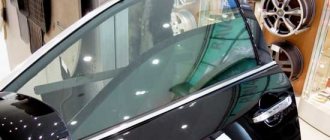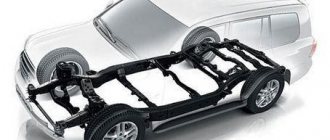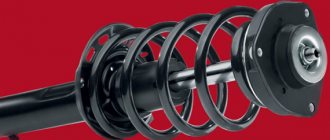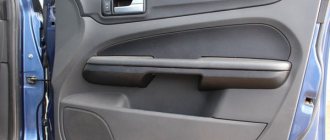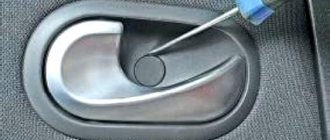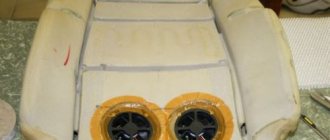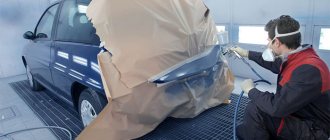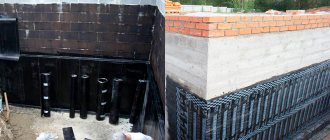- auto fabrics
- a natural skin
- alcantara
- leatherette
- almara
Reupholstering door cards is a labor-intensive, but not the most difficult process in interior tuning.
In fact, with a little patience and perseverance, it is absolutely possible to do it yourself. In our article we will try to describe the basic procedures for reupholstering door cards and important points that need to be taken into account. To begin with, we need to decide on the material with which we will pull.
Almost any material for auto tuning is used for door cards - from automotive leather and Alcantara to velor and auto fabrics. Each material has its own advantages, you can read more in our article, and in the catalogs of the website avtotkani.kiev.ua you can select any materials for auto tuning in the color scheme of your interior.
In our case, we describe eco-leather upholstery - a modern, reliable and stylish material. Eco-leather is resistant to mechanical stress, wear and temperature changes and ideally combines price and quality.
- Tools:
- Fine sandpaper
- Sharp scissors
- Construction knife
- Chalk or marker (for drawing patterns)
- Solvent (can be gasoline or industrial alcohol)
- Special glue for working with automotive materials
- Brushes (preferably one for each door)
- Rubber roller
- Plastic spatula (you can use an unnecessary credit card)
- Patience
Door card reupholstery:
First you need to remove the door card. If you have never done this, it is better to first consult at the nearest service station, or with a familiar specialist. When dismantling, pay attention to the disconnection of plastic elements and electrics (door handles, window regulators, speakers).
As a result, we get a map without all the additional elements.
Now we remove the old upholstery. Starting from the door handle, we tear off the old material. We do this confidently, but carefully - we will need it to remove the pattern. Usually the material comes off quite easily; the difficulty can only be in the corners and on the bends.
Next, remove all remnants of old glue and clean the surface with sandpaper. If the material you will be using is thick enough, a perfect surface is not necessary.
As a result, we got this map:
We carefully degrease the cleaned surface with a solvent and wait until it dries. We lay out our new material on a flat, clean surface. We apply the fabric we removed from the card and trace the pattern with a marker with a margin of up to 3 cm. Cut out a piece.
We place our new material face down on a hard surface. We also place the old fabric face down on it, level it, press it and outline the final size with a margin of up to 5 mm. Carefully cut along the contour.
We get this cut:
Next, we glue our material onto the card.
To do this, we first put the material on the card to understand how it will fall. It's easiest to start with flat, level surfaces. First, glue the central part. We smear the surface of the card and the back of our material, wait until it dries, and glue the corresponding areas. Don't forget to carefully level the material. To do this, use a rubber roller - it will smooth the material and ensure maximum adherence of the surfaces.
Next, using the same technology, glue the edges.
It is important to remember that glue for car leather or leatherette is fixed at a temperature of 50-60 degrees, therefore, after gluing the areas, they need to be heated with a hairdryer. You can also use a hairdryer to heat the edges of the material to stretch them, or remove wrinkles or folds. On bends, especially at corners, you need to heat the material very carefully, because you can burn it out. If you can’t remove wrinkles in the corner, you can carefully trim the material end-to-end, glue and smooth it out.
Using a credit card, we tuck the edges of our material into the gap, smooth it out and press it down. If there is excess material, carefully trim it.
After gluing, you need to wait about a day for the glue to fully polymerize. The result is a completely new door:
We hope that our tips will help you change the look of your car yourself, as well as save time and money.
Hi all! Finally, the time has come to post another material on restoring the interior of a car on our own.
Door cards. This is not an unimportant element of any car. And often, in an effort to transform the interior of our car, we forget about the door cards. Although this is quite an important, functional and, most importantly, clearly visible element of the interior. And so we will try to revive our doors on our own, with improvised means and at home. For the sample, door cards from two cars were taken - Mitsubishi Galant 2001. and Volvo S40 1999 Although these cards are essentially different from each other, they have one style that is very characteristic of many other car brands. Basically, there are two types of finishes - thick fabric glued to a plastic base, and thick fabric on a foam rubber backing glued to plastic or pressed cardboard.
The most tedious and uninteresting part of the work is cleaning the card from old fabric, glue and foam backing with glue (it is usually brown)
Next, remove the pattern from the prepared and disassembled map. To do this we need patience, masking (paper) tape, a pencil and a thin knife. Initially, we cover the entire card with tape (!no need to use long pieces!) Tear off small pieces of tape, 15-25 cm each, so that they lie flat and without wrinkles on the bends. We glue it in absolutely any direction, as convenient. The result should be a flat, smooth surface sealed with tape. Then along the edges and bends we mark the lines of our future seams. When marking, take into account the fact that the marked parts should be as simple as possible, then it will be easier to sew them and place them on the card.
Reupholstery of door cards with eco-leather
We should be left with a map without any additional elements. 3. Now we need to clean our surface from the protrusions of old glue; we do this using sandpaper. We don’t suffer too much because the material is thick enough and the glue we bought is thick enough. 4. We begin to degrease the surface we have just cleaned.
We do this using industrial alcohol (I did it with it, whatever you want). 5. While our map is drying, we begin to cut out a copy of it from eco-leather.
We outline with a margin of 5 mm on the outside; you can make small holes on the inside for now, in order to avoid problems later (it’s better that the piece you cut out is larger than that it won’t be enough in some part later). Cut along the outlined outline. This is the result: It is better to glue at home in a warm place, because...
the glue will dry better and faster and you won’t have to “have fun” for a long time, so choose for yourself... Before you rush to glue the eco-leather, carefully try on the places where it fits on all sides (especially the edges, where there are folds and protrusions, so that you have something to tuck in later).
Advantages and disadvantages of automatic doors
We figured out the design, and I think many people have already formed their opinion about such door systems. For those who still doubt the advisability of installing such doors, we will present their advantages and disadvantages. The positive aspects of automatic entrance doors include the following points.
- Convenience and safety. We talked about this above - these factors are provided by adjustments and various operating modes of automatic doors.
- Reliability and durability. The key to this advantage of automatic doors is the exclusion of the human factor from the process of opening and closing.
- Energy saving. We also mentioned this above - energy saving is ensured by automatically closing the doors immediately after a person enters the room and by the so-called winter operating mode.
- Versatility. With the help of such doors you can close an opening of any width. It should be understood that the wider it is, the greater the number of doors the door will have.
- Compatible with any electronic control and security alarm systems. Such doors can be equipped with intercoms, electronic locks, video surveillance, and many other functions that ensure control and security of entry into the premises.
Automatic glass doors photo
As for the shortcomings, the only thing that can be highlighted here is the need for periodic maintenance - after all, any equipment requires repair and maintenance. If you do not pay attention to this issue, automatic doors will simply break down quickly. Also, the disadvantages of such doors include their too high cost - if we talk about their use in houses and apartments, not every person can afford such a pleasure.
Do-it-yourself car interior reupholstery, instructions
- A screwdriver and a set of keys will be needed to dismantle the existing casing.
- Tailoring scissors - with their help we will cut out the desired contour in the material.
- A hairdryer will help remove wrinkles from the material.
- Glue, preferably one that is intended for soundproofing the interior.
In order to reupholster the car interior as efficiently and beautifully as possible, it must be carried out in conventional “zones”: seats, dashboard, doors, armrest, ceiling. Armchairs are perhaps the lightest elements in upholstery.
You can update them in two ways: the first is to simply purchase covers that match the fabric, texture and color, and the second is to completely reupholster the seats, that is, dismantle the old upholstery and replace it with a new one.
The first option does not need any comments - even a schoolchild can handle it, but let’s talk about the second in a little more detail.
So, in order to change the upholstery on the seats, the first thing you should do is remove them from the interior.
Then we proceed as follows. By the way, if Alcantara is still used for the new finish, do not forget to track the consistency of the pile direction of each piece, otherwise you will get a mismatch of shades.
Tip: the two front seats in the car are the same, so using the patterns of one of them you can sew 2 new covers at once. Video on how to reupholster car seats with your own hands
When the dashboard is dismantled and removed from the cabin, we proceed directly to the reupholstery. Video on reupholstering a car dashboard with your own hands
The process of re-upholstering doors is much simpler than re-upholstering a dashboard, so it will not take you much time.
Video on reupholstering car doors with your own hands (Part 1)
Do-it-yourself reupholstery of the car armrest is carried out as follows:
- we dismantle the interior element;
- we make its pattern on paper;
- apply this pattern to the fabric and cut it out, not forgetting to leave allowances for the folds;
- Having secured one edge, we pull the material tightly and glue it around the perimeter.
Video on reupholstering a car armrest with your own hands
The last stage of reupholstering the car interior with your own hands is updating the headliner. Video on reupholstering a car ceiling with your own hands. That's it, reupholstering the main elements of the interior is complete.
All remaining parts, such as the rear and side parts of the interior, are tightened in the same way. You can also read the instructions for upholstering a car interior with your own hands.
Is it necessary to install moldings on the doors?
Regardless of the complexity and budget of tuning, door molding is an integral part of it. Essentially these are voluminous rubber gaskets that are located at the bottom of the doors. Some people mistakenly believe that plastic moldings can only perform a decorative function, however, if the linings are made of high-quality material, then they can reliably protect the doors from shagreen, that is, defects will not form on the surface due to impacts from small stones.
Thanks to the relief molding, the risk that damage to a car, both your own and the one standing next to it, will occur in a dense parking lot is significantly reduced. Moldings are not very expensive, but you can save a lot on door repairs. For many motorists who use a car in urban conditions, after one year of operation in winter, it becomes noticeable that corrosion has already begun from the bottom of the doors. This occurs due to exposure to reagents and moisture.
Thanks to ABS plastic, it will be possible to create reliable protection, since it is not afraid of salts and moisture. If the moldings are installed well, there will be no water penetration. It should also be noted that there is much less water and dirt in the car. If previously there was no protection on the doors, then you can install moldings to hide the existing flaws.
Naturally, before installation, complete cleaning and resuscitation of the door will be required to stop the corrosion process.
Reupholstery of door cards, car doors
Atelier "Avtomilor" offers reupholstery of car doors, door inserts, door handles, door pockets, armrests.
We use high-quality automotive leather and suede from Schweizer, Nappa and other brands.
- Individual design. Any combination of materials of your choice – leather + Alcantara, leather + carbon. It is possible to reupholster the door inserts with exotic leather. We can also produce wooden inserts for car doors.
- Extensive experience (more than 15 years) - which means flawless execution of work of any complexity.
- High-quality materials from well-known manufacturers, which ensures an impressive appearance and durability of the new door upholstery.
- Large selection of materials. We offer more than 70 types of leather of different shades and textures for reupholstering door inserts.
- Work guarantee.
- Leather + suede in traditional shades (black, gray, brown) + wooden insert. Noble classic.
- Neutral leather or suede + exotic leather insert (for example, python).
Butterfly doors
Butterfly doors are most often found on supercars. They give the model a particularly aggressive look - this was the original intention. At the same time, the designers were not at all interested in the question of how passengers would enter the cabin.
See also: How to prevent car doors from freezing
The butterfly system is similar to the scissor door system, which allows the doors to move slightly outward and then upward. With such an optimized design, it becomes easier to get into the cabin, although the convenience of the passenger and driver is, apparently, the last issue of interest to the manufacturer.
Popular car models that use butterfly doors are Enzo Ferrari, Saleen S7, Mercedes Benz SLR McLaren and McLaren F1. The latest Mercedes series did not use precise butterfly designs, but slightly modified door fastener systems.
Car door card material
Materials for interior tuning of the cabin - wholesale and retail The disadvantages and advantages of any material are determined by various features: type of fabric, structure, strength, elasticity.
Materials for reupholstering car interiors also differ in price segment. Toyota Corolla BMW -Vlad's Fighting Machine › Logbook › door cards in leatherette Good day everyone!
The idea is not new, and not original, but I decided only now. I lay out the cards on the prepared leatherette.
I selected the leatherette as close as possible in texture and color. Photos are attached from the second successful attempt (I did everything at home, slowly and carefully).
VAZ 2110 interior In the interior section you will find not only photos of the reupholstery, but also a video!
Collection of photographs after the VAZ 2110 showroom.
Moscow, st. 1st Stekolnaya, 7k7 Moscow, st. Bolshaya Tulskaya 19 tel. CAR DOORS Why are car doors needed? At the AVAT car studio we offer such services as doors and their elements.
Upholstery Until the end of the month! Let's make your car more expressive, elegant and colorful! You can create an individual interior, choose the material and color scheme in our studio.
- door cards
- ceiling
- torpedo
- Complete interior remodel
- seats
- Steering wheel cover
- Covering the armrest, gearbox and handbrake
This is what cars look like after the interior has been reupholstered!
Chips that will make your salon more expensive!
Choosing the best material for car interior trim Below are answers to the most relevant questions regarding the inside of a car. Car Upholstery The most significant elements of a car's interior that need to be upholstered are the front and rear seats, headliner, door panels, as well as elements such as the steering wheel, gear lever, and car desktop display. Material for reupholstering door cards
Operation is accompanied by abrasions, burns, tears and numerous scratches on the casing.
Complete doors or individual parts solve all of the above problems.
What to look for when choosing contract doors
First of all, you need to study the catalog with photos and descriptions. Reputable sellers take photos from different angles and indicate in the catalog all existing defects. Pay attention to the package. Thus, the JapZap company supplies doors without sealing, fastenings, or trim. Power window and mirror must be purchased and paid for separately.
Luggage (5th) contract doors are usually more expensive than side doors for the same model
Doors for different brands and models of cars have a variety of configurations, but there are several generally accepted ones. Hatchbacks and station wagons have three and five doors, the 3rd or 5th door is a trunk lid with glass, it is more expensive than regular side doors due to its larger size. Sedans and coupes are cars with only side doors (2 or 4). Standard hinged doors open in the direction of travel; there are also rear-hinged doors and wing doors that open upward. In minibuses and minivans, sliding doors with a roller mechanism are installed. Most doors are opened manually, but in premium cars they can be electrically operated.
It is worth asking about the origin of the node. Typically, cars with low mileage and no damage end up at car wreckers in Japan. Owners get rid of them due to the peculiarities of the law: the older the car, the more expensive its mandatory maintenance is. But sometimes salvage cars are dismantled for spare parts, and it is not advisable to purchase doors from such cars.
If, based on the descriptions and photos, you have your eye on a suitable product and decide to place an order, do not forget to inspect the doors again upon purchase:
- make sure there are no defects not reflected in the photo and in the catalogue, in accordance with the declared configuration;
- the door should not have dents, deep scratches, or traces of corrosion; light abrasions and paint defects are acceptable.
And one final piece of advice. If doors are purchased with delivery, you should not skimp on packaging and carrier services. Suppliers of contract spare parts usually cooperate with transport companies whose services they are confident in. Choosing an unverified carrier can result in door damage during transportation. It is also highly recommended to choose rigid cargo packaging.
Material for reupholstering door cards
Hurry, the promotion time is limited, call: Genuine leather is the best option.
The process of reupholstering a car panel is quite simple, but requires certain skills.
The template is first fitted to the panel itself. For panels that consist of many component parts, the same principle applies, only to each part individually.
The result is ready-made paper stencils for cutting. The leather is cut according to patterns. The skin is stitched together and, if necessary, a decorative seam is made.
The edges of the seams are folded and glued, and if necessary, tapped with a small hammer. Edges that are too long are removed with scissors.
The part is degreased with any degreaser (for example, “supercolle”). Glue is applied to the panel and the skin in even layers. The skin is placed on the panel and glued under the influence of the temperature of a technical hair dryer (any possible wrinkles are smoothed out with a hair dryer).
At the end of the work, the part is reheated with a hairdryer for better gluing (the glue is activated only when heated). For stitching leather, we use reinforced threads, which are very strong and reliable. Our specialists reupholster parts with high professionalism and provide long-term guarantees for both leather and leatherettes.
Material for reupholstering the car interior - updating the car from the inside
Using a universal auto scanner, you can do the diagnostics yourself in 2 minutes and find out why CHECK is on.
Suitable for all cars. » Read more >>
Choosing the right fabric for finishing is often difficult.
Buyers are not only confused by the wide selection of materials, but are also not always familiar with the technology and principles of upholstery.
It is these factors that often play a very cruel joke on the unlucky buyer.
After all, the cost of high-quality fabric sometimes exceeds 5–10 thousand.
Many of us remember well the time when the most common material for seat trim was ordinary thick fabric.
Every year there are more and more materials, and today the buyer has the opportunity to choose the following cladding:
Every motorist should have such a universal device for diagnosing his car. Nowadays you can’t live without a car scanner!
You can read, reset, analyze all sensors and configure the car’s on-board computer yourself using a special scanner.
To protect yourself from low-quality finishing materials, you need to remember the signs of high-quality fabric. A reliable material for reupholstering a car interior can be easily determined by the following factors:
If the manufacturer fulfilled each of these conditions when creating its product, then you can be sure that this material is really high quality and worth the money you spend.
Do you still think that diagnosing a car is difficult?
If you are reading these lines, it means you are interested in doing something in the car yourself and really saving money, because you already know that:
We ourselves tested this scanner on different machines and it showed excellent results, now we recommend it to EVERYONE! To prevent you from falling for a Chinese counterfeit, we publish here a link to the official website of Autoscanner.
"Doors for suicide"
Despite the fact that the door design has such an unusual name, its technology is designed for implementation in ordinary city cars. Already today, a series of cars with a similar door design are being produced. The best example is the new Opel Meriva, which uses Flex Door technology, which copies the “suicide doors” with minor modifications.
In a few words: “suicide doors” are those that open in the opposite direction from the usual ones. Their fasteners are installed on the rear pillar. The doors got their name due to the widespread story that passengers who tried to close such a door while the car was moving simply fell out of the cabin.
Indeed, it is difficult to resist the air flow, but according to another no less popular version, the doors received this name because the passengers, having coped with the terrible design of the door, got scared, got angry, waited for the car to stop, pulled the driver out of the cabin and killed him...
The story seems quite justified. Cars that use the killer design: Opel Meriva (unveiled at the 2010 Geneva Motor Show), Rolls Royce Phantom, Spyker D12, 1940 Peugeot 601 and 2011 Mazda RX-8.
Material for reupholstering door cards
To begin with, we need to decide on the material with which we will pull.
In our case, we describe eco-leather upholstery - a modern, reliable and stylish material. Eco-leather is resistant to mechanical stress, wear and temperature changes and ideally combines price and quality. As a result, we get a map without all the additional elements.
Now we remove the old upholstery. Starting from the door handle, we tear off the old material.
We do this confidently, but carefully - we will need it to remove the pattern. Usually the material breaks off quite easily; the difficulty can only be in the corners and on the bends.
Next, remove all remnants of old glue and clean the surface with sandpaper.
If the material you will be using is thick enough, a perfect surface is not necessary.
As a result, we got the following map: Thoroughly degrease the cleaned surface with a solvent and wait until it dries. We lay out our new material on a flat, clean surface.
We apply the fabric we removed from the card and trace the pattern with a marker with a margin of up to 3 cm.
Cut out a piece. We place our new material face down on a hard surface.
We also place the old fabric face down on it, level it, press it and outline the final size with a margin of up to 5 mm.
Carefully cut along the contour. We get this cut: Next, we glue our material onto the card. Next, using the same technology, glue the edges.
Using a credit card, we tuck the edges of our material into the gap, smooth it out and press it down. If there is excess material, carefully trim it.

